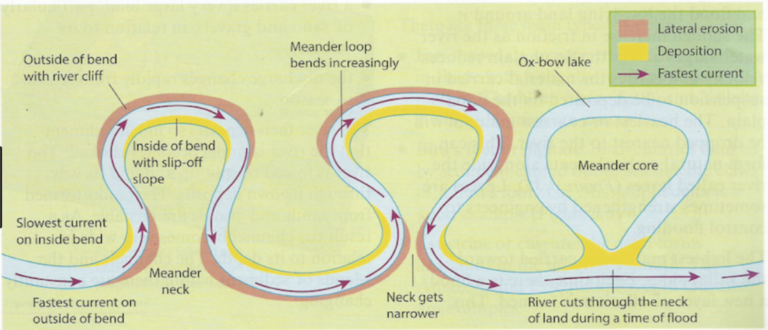
Over time the meander becomes more pronounced and the ‘neck’ of the meander becomes smaller. Video on formation of meanders and ox-bow lakes

On the inside of the bend the velocity is much slower and consequently, deposition occurs creating a slip-off slope. The faster water travels around the outside of the bend, eroding the banks through abrasion and hydraulic action.

They are formed by a combination of erosion and deposition. Erosion is now mainly lateral and it has widened the river. In the middle section the river has more energy and a high volume of water. Landforms resulting from erosion and deposition This process happens repeatedly which means that the waterfall gradually retreats upstream creating a gorge. Over time this creates an overhang which eventually, due to gravity, collapses under its own weight. A plunge pool is created and processes such as abrasion and hydraulic action cause further erosion of the soft, less resistant, rock. As the river flows over the hard rock onto soft rock, the soft rock will be more easily eroded. When a river flows over alternating layers of hard/soft rocks waterfalls can be formed. Interlocking spurs are created when the river has to flow around an obstruction for example, hard rock. This means that abrasion can continue to steepen the valley and the river cuts further downwards. Freeze-thaw weathering and other processes create loose material on the valley sides which are then washed into the river from the steep valley sides during times of heavy rainfall, adding to the material being carried by the river. This causes the most distinctive river feature, the V-shaped valley. In the upper course of the river, the river cuts rapidly downwards, as the main direction of erosion is verticall. In the upper course erosion is the dominant process creating V-shaped valleys, interlocking spurs and waterfalls. Each of these sections have different dominant processes resulting in different features.



 0 kommentar(er)
0 kommentar(er)
